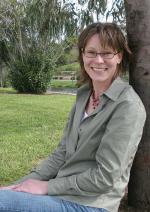Keeping the flow for Murray trees
 Environmental Biology Environmental Biology
Ensuring that there are young and healthy eucalyptus trees along the lower River Murray is a better long-term solution for the river's health rather than only focusing on old and sick trees, according to new research. Dr Amy George studied eucalypts along the Murray River in South Australia as part of her PhD thesis with the University of Adelaide's School of Earth and Environmental Studies. Dr George, who now works as a Senior Ecologist with the State Department of Water, Land and Biodiversity Conservation, researched the regeneration of river red gum and black box tree populations at Banrock Station about 200km north-east of Adelaide. She found that not only was there a disproportionate number of older trees compared to younger ones, but that most of the trees in these areas were in a severe state of decline. The concern is that older trees are not replacing themselves sufficiently to keep trees along the river. Some of the work identified that river flows are essential for tree regeneration (the natural process by which plant populations are maintained over time), and under the current river regime moderate sized flows are not happening often enough to stimulate expansive germination of new trees. "The focus needs to shift away from mature and old trees to include the development and growth of young trees along the floodplains," she said.
"The continuous rejuvenation of young trees is vital, because unhealthy trees are less likely to flower and produce seeds which reduces the potential to produce new and healthy ones." She said that the current flow regimes are inadequate for maintaining continuous tree replacement. Environmental flows - water that is allocated or delivered along the river that attempts to reinstate a more natural flow pattern - may address the need for water, but a programmed sequence is required for these environmental flows to be effective. However, currently there is little understanding of the "right conditions" for regeneration and reproductive processes in floodplain vegetation. Dr George's study also shows that unhealthy trees will not provide sufficient seed supplies to make up for population losses throughout River Murray basin. "Regeneration can't occur if seeds are unavailable, and seed availability begins with the parent trees," she said. "At this stage, the population of the black box is in decline because they do not have the ability to live, function and grow. There is a strong need for ecologically significant environmental flow allocations to prevent further tree losses and promote naturally sustainable populations. "If South Australia continues to lose valuable floodplains, there could be wider implications for the river. Rivers and floodplains are interconnected and the health of both systems depends on these connections. If the connection is broken or the floodplains are lost, then the health of the river suffers. "This highlights the need for further studies to identify not only the physiological triggers, but also the ecological conditions that initiate germination and growth." Story by Jasna Rojevic and Ben Osborne
|





